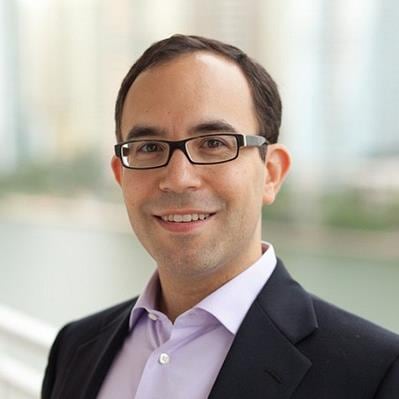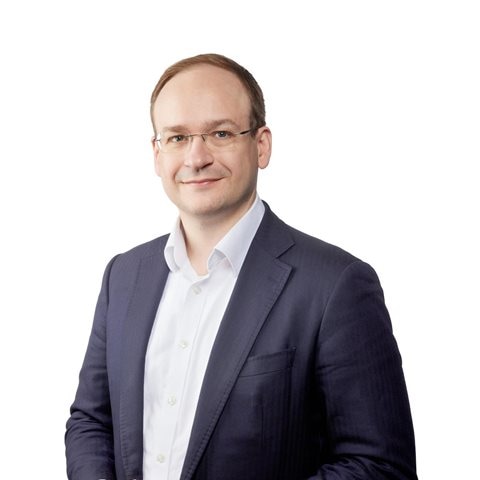The past year and a half has been profitable for the global banking industry. But even though the industry has had its best period since 2007, banks still need to acknowledge recent structural and macroeconomic shifts and look for ways to evolve with markets. On this episode of The McKinsey Podcast, McKinsey senior partner Alex Edlich and partner Reinhard Höll join editorial director Roberta Fusaro to discuss the findings of McKinsey’s Global Banking Annual Review. They outline the new challenges banks are facing and suggest how leaders can address those challenges.
This transcript has been edited for clarity and length.
The McKinsey Podcast is hosted by Roberta Fusaro and Lucia Rahilly.
A time of reckoning
Roberta Fusaro: Take a look at the balance sheet in any global bank today, and it will probably look different—lighter—than it did ten years ago. Here’s McKinsey senior partner Alex Edlich on one of the biggest takeaways from McKinsey’s annual banking report, The Great Banking Transition.
Alex Edlich: There are $402 trillion in assets that exist in the global financial system. More than half of that is not on bank balance sheets. Over the past decade, 75 percent of the net increases have gone into mutual funds, insurance balance sheets, pension funds, sovereign wealth funds, and private capital.
Roberta Fusaro: Partner Reinhard Höll agrees and says that while the balance sheet has eroded, interest rates have risen over the past 15 years. Those rising interest rates boosted net interest margins, which in turn boosted the sector’s profits by about $280 billion in 2022. Another big change? Technology.
Reinhard Höll: In the past, whenever we talked about technological change, it was always about big programs, about cloud, about core banking migration systems. Now we’re talking about gen AI [generative AI] and stuff you can implement pretty quickly.
Roberta Fusaro: What’s clear is that financial institutions are in a reckoning. They are having to reinvent themselves in the face of some major structural and macroeconomic shifts.
This is The McKinsey Podcast, where we help you make sense of the world’s toughest business challenges. I’m your host for today, Roberta Fusaro.
Banks in transition
Roberta Fusaro: If I’m a leader in a traditional bank right now, what are some of the challenges I’m facing?
Alex Edlich: Here are a couple of examples. Consumer digital-payments processing conducted by payment specialists grew more than 50 percent in the past few years. In payments, the shift to contactless digital payments is accelerating.
In addition, the demand for embedded finance, offered through checkouts on websites or apps, is also growing. Capital markets, investment banks, and broker-dealers are gaining market share from traditional banks in various products, whether that’s in equity or capital markets.
Distribution is also increasingly moving from omnichannel to fully mobile channels. Banks need to operate differently in those environments. Their clients want different services. Their lenders want different loan durations, and sometimes insurance companies are better able to match the durations.
It is critical to think about, “How are we selling directly to customers or indirectly to customers? What are the technology platforms that we need to have to make our products and services more seamless?” In many countries, apps, mobile phones, and the web have fundamentally changed how consumers interact with their financial institutions.
They are searching, shopping, and sometimes even transacting on their apps. This creates a different role for a financial-services institution. How do banks respond to that? How do they move further upstream? How do they meet the clients where they need to be met?
Roberta Fusaro: Reinhard, can you build on that? What kinds of changes are we seeing in banking distribution?
Reinhard Höll: We’ve seen two things. The first is that a lot of the distribution is not advisory driven, but it can be digitized quickly and done at scale. This means banks should always try to get the advisory angle in there or be really, really good in nonadvisory-driven distribution.
Second, some of our estimates indicate that we will see up to 30 percent of distribution in retail banking going via third parties. This could be an online comparison platform. This could be embedded finance. This could be all kinds of things. This can happen with the banks, or against the banks where you still only provide the service, but someone else effectively has customer access. Banks need to think very clearly about how they want to position themselves. For that, some of the answer may be, “Well, we provide the service at scale, and we’re still going to have a healthy economic return.”
The risk factors
Roberta Fusaro: What kinds of risks are banks facing now in the midst of this “great transition”?
Alex Edlich: The changes in interest rates and in the wide dispersion of economic outcomes and forecasts are extremely large. Financial institutions and banks need to up their game to the next level in order to meet these changing risks, such as new regulatory requirements, the macro context, and risks associated with technology and cyber.
Reinhard Höll: It’s probably one of the toughest questions we’re asking in the report. If we look forward, you have the traditional banking risk, like credit risk, market risk, and liquidity risk. And it’s still at the forefront of everyone’s mind, given the macroeconomic outlook, given geopolitical instability.
But you actually have to go further. On the one hand, you see under the great header of technology risk, cyber risk and fraud risk. We are seeing broader APIs, and APIs in a sense that we have broader connectivity to other players, your customers, which introduced potential additional risks. Sometimes the risk may not actually come out of your organization, but it may actually be coming from partners.
Look at retail distribution, for instance, which is done with partners and through partners. The financial institution only provides the underlying service, but you need to make sure the partners still comply with regulations, so they won’t shine a bad light on you as a banking institution.
Roberta Fusaro: What can banks do differently to mitigate the risk?
Reinhard Höll: Three things spring to mind. The first is technology—for example, instant payments. Any payment can happen within a couple of seconds. If you want to look out for fraud risk, you’ll want to look out for KYC [know your customer] risk.
The second is making sure that risk is not thought about in silos but rather across the different environments. Also, making sure we think not just about compliance but how it fits together with the underlying factors that drive fraud. This can make a huge difference. Last but not least is making sure that you have the proper risk culture and risk compliance culture in the background. We have consistently seen that risk culture is one of the strongest determinants of how well an institution—whether it’s a traditional bank, a payment company, or a stock exchange—can steer through all the difficulties. The reality is that banking institutions are ultimately in the business of taking risks. That will hopefully never change. To manage them correctly, it’s a combination of technology, culture, and everything in between.
Roberta Fusaro: Reinhard, what do you mean by risk culture?
Reinhard Höll: Risk culture is really a combination of the underlying mindset and the risk practices. We often think about it as something that cuts across a number of dimensions: How well do you understand risk? What’s your transparency on risk? How much do you acknowledge those risks? And there’s a third element, which is responsiveness: What level of care and what speed should I apply, particularly to some of the faster-moving kinds of risk?
Banking across geographies
Roberta Fusaro: This was a global study. Alex, what differences did you see across geographies?
Alex Edlich: Between 2015 and 2022, the changes in total assets that went off the banking balance sheet in North America was 79 percent. It was 77 percent in Europe. But for China, it was only 34 percent. In the rest of Asia–Pacific, except for China, it was 51 percent. In Latin America, it was 40 percent.
This is a global phenomenon: in every geography, except for Latin America and China, the share that’s going off the banking balance sheet is more than 50 percent. One of the really important things is what we see in the Indo-Crescent region.
Reinhard Höll: This region, which starts in East Africa and stretches to the Middle East, India, ASEAN [Association of Southeast Asian Nations] countries, and Australia, had the majority of the best-performing banks on the planet. This is the first time in history we’re seeing this for this region.
If we cut up the top financial institutions by market cap, 28 percent of those institutions are in the Indo-Crescent region. There is a huge middle class rising in India, and the country is opening up to cross-border payments. You have ASEAN, where we see a big, broad-based SME [small and medium-size enterprise] industry base accessing more finance. You see wealth management taking off in the Middle East, and you’re seeing an increasingly interconnected East Africa. So a lot is happening.
Embracing technology
Roberta Fusaro: Lots of opportunities are emerging in ASEAN countries and elsewhere in the world. But you know technology is another big opportunity—it’s actually a key area of focus in the report. Alex, what should banks be doing with their technology?
Alex Edlich: From a technology and AI standpoint, it is so critical to continue to boost productivity. We’ve seen the improvements that financial institutions have made over the past decade, particularly banks, in improving their cost-income ratios, improving their cost per asset to serve.
Financial institutions should ask themselves, “How can we continue to exploit technology, advanced analytics, and AI to leverage our talent better, to improve the quality and delivery of our products and services, to better meet clients where they want to be met and how they want to be serviced?”
We believe it’s not only an opportunity to improve client service and customer experience, but it’s also a way for them to continue to innovate the products and services that lenders and other banks and financial-services customers can get from them.
Roberta Fusaro: What do banks have to do to compete on technology? What’s changed there?
Reinhard Höll: A couple of things have changed. We should not forget that banks were one of the earliest adopters of technology back in the 1980s. That said, a lot of them are still stuck in the 80s.
The report highlights that of the best-performing banks in Europe, the top ten invest, on average, two and a half times more into technology than the bottom ten. So there’s a big difference in terms of investment. At the moment, profits are up, meaning investment possibilities are up.
Want to subscribe to The McKinsey Podcast?
There has also been a step change in technology. It’s not just about your core banking system but generative AI in particular. Gen AI allows better and simpler customer interactions. It allows banks to use all the soft information/data they have, be it in operations, be it because of customer interviews, or be it in terms of monitoring software. They can leverage that data, which at the moment requires lots and lots of manual intervention, and use it to their advantage.
The third element is really about how the barriers to entry have gone down, especially with gen AI. For instance, digitally interacting with your customers and not having just a chatbot, which can drive you insane when you interact with it. It’s really more about providing the right tonality, providing services, and helping your call-center agents. Often, the banks that implement technological improvements have a quick turnaround. By exploiting new technology, banks will boost productivity within six, eight, 12 weeks. This is a massive change from what we have seen in the past.
Roberta Fusaro: For the banks that are further along on this technology journey, what are they doing differently? How are they making decisions differently?
Reinhard Höll: A multitude of answers springs to mind, but I would probably highlight three things. One is having a very clear strategy about where technology is a distinctive advantage for banks and where it’s maybe more of a hygiene factor. They need to tack along and have a clear idea of where to invest.
Second is making sure to take the organization along. An example of this, which we have seen when we implemented gen AI at one particular client of ours, is an increase in coders’ productivity. For the top 25 percent of banks, the increase was massive. For the bottom 25 percent of banks, we actually saw an initial decrease because they didn’t take the people along.
Third is aligning the technology with the local regulatory regime, with what their customers actually need, and making sure that it’s a fitting end-to-end package. It’s not just about fixing something for the short-term results. It’s about taking a little bit of a longer view on technology and implementing all the necessary things. Be it agile, be it cloud, be it gen AI, or be it the analytics behind it.
Why it isn’t business as usual
Roberta Fusaro: In the report, we talk about the need for banks to scale or exit existing businesses as part of this transition. Does this present new challenges for banks? Because it feels like banks typically do acquire and divest assets fairly normally. What’s different here?
Reinhard Höll: So we highlight this particularly for transactions because that tends to be the most cross-border and international part of it. When we talk about scaling or exiting, it means a few things. One, it means thinking clearly about where you are and if you are big enough to provide transactions locally. If you are you too small to provide those transactions at scale and find a partner, then exiting might be the answer.
Or is it a mixture that is in-between, which then means partnering? So the answer to a given illustration could be if you’re a medium-size institution in the US and you still do everything about security services and capital markets yourself. If this is a scale-driven business, we would have to ask the question, “Is this something someone else could do better for you?”
If you ask that same question to a bank in Slovenia, the answer might be that that bank is the only one that’s offering transactions locally. So the question of scale affects this bank differently, and the bank may need to invest and scale up further to get the best products and services for its customers.
Also, there’s another interesting element. Banks do acquire and divest assets. Historically, they have done so. But in the past 15 years after the financial crisis, we’ve seen much less of that. And what we suspect in many respects is that we’re going to see somewhat of a pickup in activity.
The record profits also need to go somewhere. You can invest them into your franchise. You can give them back to shareholders or other stakeholders. Or you can think more about M&A. And sometimes the answer is, particularly in the richer ecosystem of fintechs, that you may acquire smaller stakes in quite a few of the fintechs and build a partnership network around you without necessarily owning all of them.
A new approach to the balance sheet
Roberta Fusaro: This talk about acquisitions is making me think about the balance sheet, Alex. How should traditional players think about these recent changes to the balance sheet?
Alex Edlich: From a balance sheet standpoint, we do think that there is an ability to flex and to sometimes even unbundle their balance sheet. Whether that means figuring out which are the assets that need to remain on their bank balance sheet, or actually better syndicated to others, or originate to distribute to other institutions that are better able to hold, who have better cost to funding, or better duration, or better liabilities to match those assets—that would be one thing that they could do.
They should think exceptionally hard about which are the products, clients, geographies, services that do require a balance sheet and that the banks are best off serving. Not everybody can be served by a bank when you have a constrained balance sheet. But in this environment, which does have great tailwinds for banks with higher interest rates and greater spreads, there’s a question of what do you do with your balance sheet now that it’s earning more money than it was in a very low interest rate environment?
Roberta Fusaro: Reinhard, anything to add here?
Reinhard Höll: So the background to this is that 70 percent of the net increase of financial stock happens off balance sheet. What does it mean? Overall, we see that the global source of financial funds in 2022 was $326 trillion—a huge number.
Of that, about 37 percent or $120 trillion were funded off the bank’s balance sheet, meaning there were deposits in the background of banks’ liability. Everything else ultimately got funded either by retail investors, for instance, through the stock market, through institutional investors, pension funds, private equity, private debt, or sovereign wealth funds.
If you look at the relative change from 2015 and 2022, the numbers are even starker. Seventy-three percent got funded off balance sheet. For banks, this has three opportunities. It means you can do business that you ordinarily couldn’t do. My normal example is, if you were to build an offshore wind farm and finance it, be it in the North Sea on the Eastern seaboard or somewhere off Japan, it’s very difficult to finance via the bank’s balance sheet. You could find a third-party provider, let’s say a pension fund, and the bank could help syndicate it and actually set it up. Many institutions at the moment don’t do it as much as they probably would want to do, and they can do even more of it.
The second thing is that, in terms of managing your own balance sheet, it allows you to back out some stuff and say, “Well, we can actually do additional business and get some risk diversification into the whole thing.” That means a bank, which may be heavily focused on mortgages, finds a partner institution or fund or whatever to take on some of the risk, which allows the institution to take on additional risk, maybe even of the same kind.
There is a third element for traditional banks, and everyone else as well, which is they could go to other institutions and actually onboard some of someone else’s credit exposure. They would generate returns.
Last, what do we mean by a traditional bank? A traditional bank for us is a bank that holds deposits and actually gives out credit facilities. But in theory, it’s always worth remembering that many people can directly hold assets themselves, and any of us who invest in stocks or ETFs [exchange-traded funds] are ultimately doing exactly that.
Making change happen
Roberta Fusaro: For any bank, whether it’s a traditional bank or not so traditional, how hard or how easy is it to change course, and what kinds of conversations do you need to have inside the organization to make things happen?
Reinhard Höll: It’s a very complex issue for some of the institutions. It often starts with the way you think about risk. Just because you may be able to use other partners for handling risk doesn’t mean you’d lose all the responsibility for it. The traditional example is the financial crisis. Part of the reason for the financial crisis was that we just offloaded risks to someone else and then it was kind of forgotten and we ran into trouble later on.
Also, the way you interact with partners, particularly the financing partners, needs to be much more up to scale.
We have always seen syndications within the industry. So for very large loans, a bank would syndicate something to do to bigger institutional investors, which is a relatively manual process. The process has become more digital over the past couple of years. But as we move to a more broad basis, in order to become effective, banks need to become more automated and digital.
The most extreme example is when we say there’s a supply chain financing where you have lots of letters of credit going through with a very short duration, and that it just needs to run automatically. So your risk assessment tools need to be up to scratch. Your APIs to communicate with partners need to be up to scratch. But you also need to have very strong SLAs with your partners to do that.
The third thing is to really make sure you approach both your partners and your risk protocols not just from a culture angle but also from a commercial go-to-market strategy. That you recognize that it’s a very different thing if you go out with the mindset of, “I’m doing mortgages, I’m doing corporate loans from my own balance sheet” versus “I’m doing something where I can actually also pass it on to partners.”
The final point is for the investors to make sure they have risk capabilities up to scratch. They are often differently regulated, and they have a fiduciary duty, be it a private equity fund or a pension fund. Make sure that this aligns with what they are looking after.
Next, first steps
Roberta Fusaro: So as we wrap up, what’s the first thing financial executives should prioritize?
Reinhard Höll: First and foremost, everyone should recognize that we’re entering a new era. The next five or maybe 15 years are going to look very different than the last 15 years of very low interest rates. And that means that your strategy, your operation, your culture, and everything around them need to acknowledge that and everyone needs to think differently about how to deal with this future.
Roberta Fusaro: OK, first step: acknowledge a new era. How about you, Alex?
Alex Edlich: Institutions are not doomed by their own business model. They’re not doomed from birth. For some, their reactions will be defensive; for some, it’s about going on the offense; for some, it’s about changing the business model a little bit.
If you can’t take these assets onto your balance sheet, then ask, who is the natural owner of them? And can you originate to distribute? So those are the types of changes that we see by different subsectors in this vast and growing global ecosystem.
Despite all the uncertainty that exists—macroeconomic, geopolitical, technological—and despite all of the turmoil that happened last year and this year, banking saw its highest profits in more than a decade. They earned, in 2022, a 12 percent return on equity and so far in 2023, 13 percent. And that compares with a 9 percent average since 2010. So despite all of the turmoil, despite all that’s happened, they’ve actually done very well.
Roberta Fusaro: Alex and Reinhard, thank you so much for taking the time today and talking through the findings.
Alex Edlich: Great to see you.
Reinhard Höll: It’s a pleasure to be here. Thank you.



